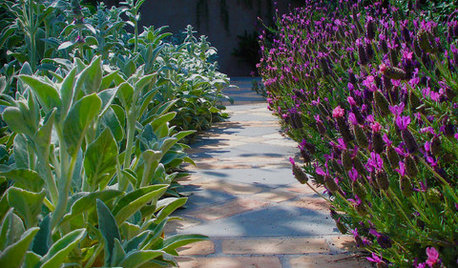Culinary Lavendar
lolaaz
14 years ago
Related Stories

EDIBLE GARDENS12 Essential Herbs for Your Edible Garden
Make home cooking and drinks even better with herbs plucked from your own backyard or windowsill pot
Full Story
GARDENING GUIDESRegal Lavender Rules Gardens Coast to Coast
Learn how to grow this fragrant, beautiful herb and show off its full beauty in the landscape
Full Story
LIFESavor Natural Scents at Home
Bread fresh from the oven, luscious lavender, just-mown grass ... the loveliest fragrances for the home are also the most natural
Full Story
LANDSCAPE DESIGNThe Garden Edge: Rethink Your Garden Pathways
The right plant choices not only frame your paths with distinction, but they also take you on a journey of the senses
Full Story









Daisyduckworth
maifleur01
Related Professionals
Londonderry Landscape Architects & Landscape Designers · Allentown Landscape Architects & Landscape Designers · Norton Shores Landscape Architects & Landscape Designers · Allentown Landscape Contractors · Dallas Landscape Contractors · Desert Hot Springs Landscape Contractors · Emmaus Landscape Contractors · Huntington Landscape Contractors · Lorain Landscape Contractors · South Hackensack Landscape Contractors · Teaneck Landscape Contractors · Thornton Landscape Contractors · Clearfield Landscape Contractors · Fairfax Roofing & Gutters · Wood Dale Roofing & GutterslolaazOriginal Author
maifleur01
tomtuxman
maifleur01